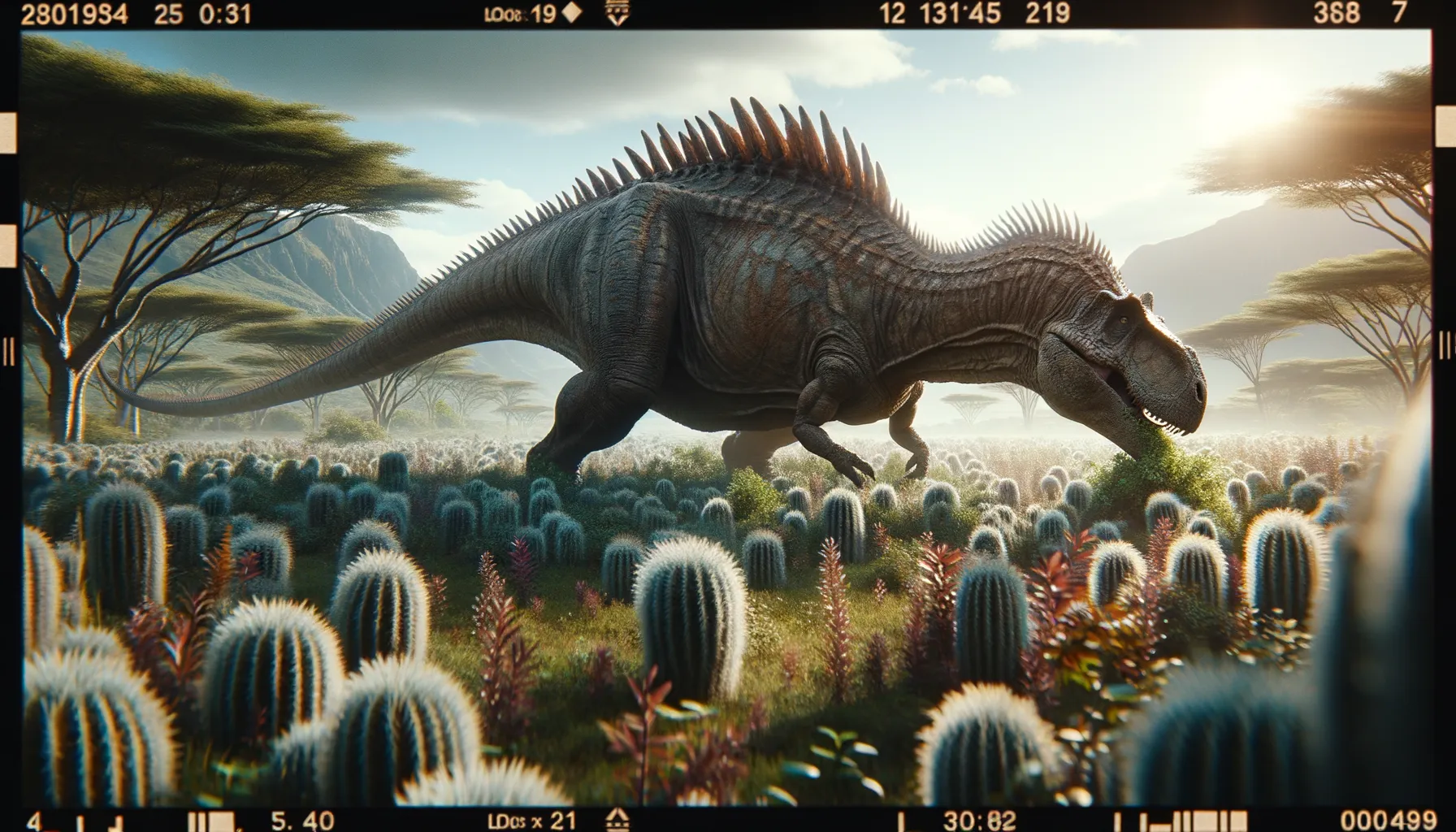
Kentrurosaurus
Spiky guardian of the Jurassic plains.
Period
Jurassic
Length
Up to 5.5 meters long.
Height
Approximately 2.5 meters tall.
Weight
Around 1 to 2 tons.
Kentrosaurus was a herbivorous dinosaur belonging to the stegosaur family, known for its distinctive double row of spikes along its back and tail. It roamed the Earth during the Late Jurassic period, primarily inhabiting what is now Africa. These dinosaurs used their spikes as a form of defense against predators. Despite their formidable appearance, Kentrosaurus mainly fed on low-lying plants and shrubs, demonstrating careful adaptations for survival in their environment.
Diet
Kentrosaurus was a herbivore, primarily feeding on low-lying plants. It used its small, beaked head to strip leaves from ferns and cycads.
Hunting
Kentrosaurus did not hunt as it was an herbivore. It relied on its ability to graze and browse vegetation for sustenance.
Environmental challenges
Kentrosaurus faced threats from large predators like Allosaurus. The harsh climate of the Jurassic period, with changing temperatures and possibly dry spells, required adaptability in finding food. Flooding rivers and other natural obstacles also posed significant challenges.
Speed
Relatively slow, as it was not built for speed.
Lifespan
Estimated around 70 to 80 years.
First discovery
Discovered in Tanzania in 1915 by German paleontologist Edwin Hennig.
Fun Facts
- Kentrurosaurus was a type of dinosaur known as a stegosaur, famous for its distinctive plates and spikes.
- This dinosaur roamed the earth during the late Jurassic period, around 150 million years ago.
- The name Kentrosaurus means 'pointed lizard' due to its large spikes along its back and tail.
- Kentrurosaurus fossils have been primarily found in Tanzania, giving us insight into its African habitat.
- Unlike its larger relatives, Kentrurosaurus was relatively small, measuring about 15 feet in length.
- Although it looked fierce, Kentrurosaurus was a herbivore, feeding on plants.
- Its tail spikes were likely used as a defense mechanism against predators.
Growth and Development
Juvenile Kentrosaurus grew quickly, likely to enhance survival from predators. Their spikes developed early, providing protection from a young age. Maturation could be observed by the plate and spike development along their back and tail.
Habitat
Kentrosaurus inhabited semi-arid environments with seasonal rainfall. It thrived in open plains and forested areas where food was abundant. Availability of water sources influenced their habitat preference.
Interaction with other species
Kentrosaurus lived alongside other herbivores and sizable carnivores. Its spiky tail acted both as a deterrent to predators and in turf wars with rivals. Symbiotic relationships with smaller dinos that cleaned parasites off their skin may have existed.
Natural lifespan
Kentrosaurus likely had a natural lifespan extending up to eight decades.
Reproduction
Kentrosaurus reproduced by laying eggs, likely in nests. Parental care is possible but not well documented. Clutch sizes varied, and the young were relatively autonomous soon after hatching.
Social behaviour
Kentrosaurus likely moved in herds for protection against predators. Herds also facilitated breeding and increased survival rates of offspring. The species exhibited territorial tendencies, possibly defending areas rich in food.
Fossil locations
Fossils have primarily been found in the Tendaguru Beds of Tanzania. This region is known for its abundance of Late Jurassic dinosaur fossils, providing critical insights into Kentrosaurus's existence.
